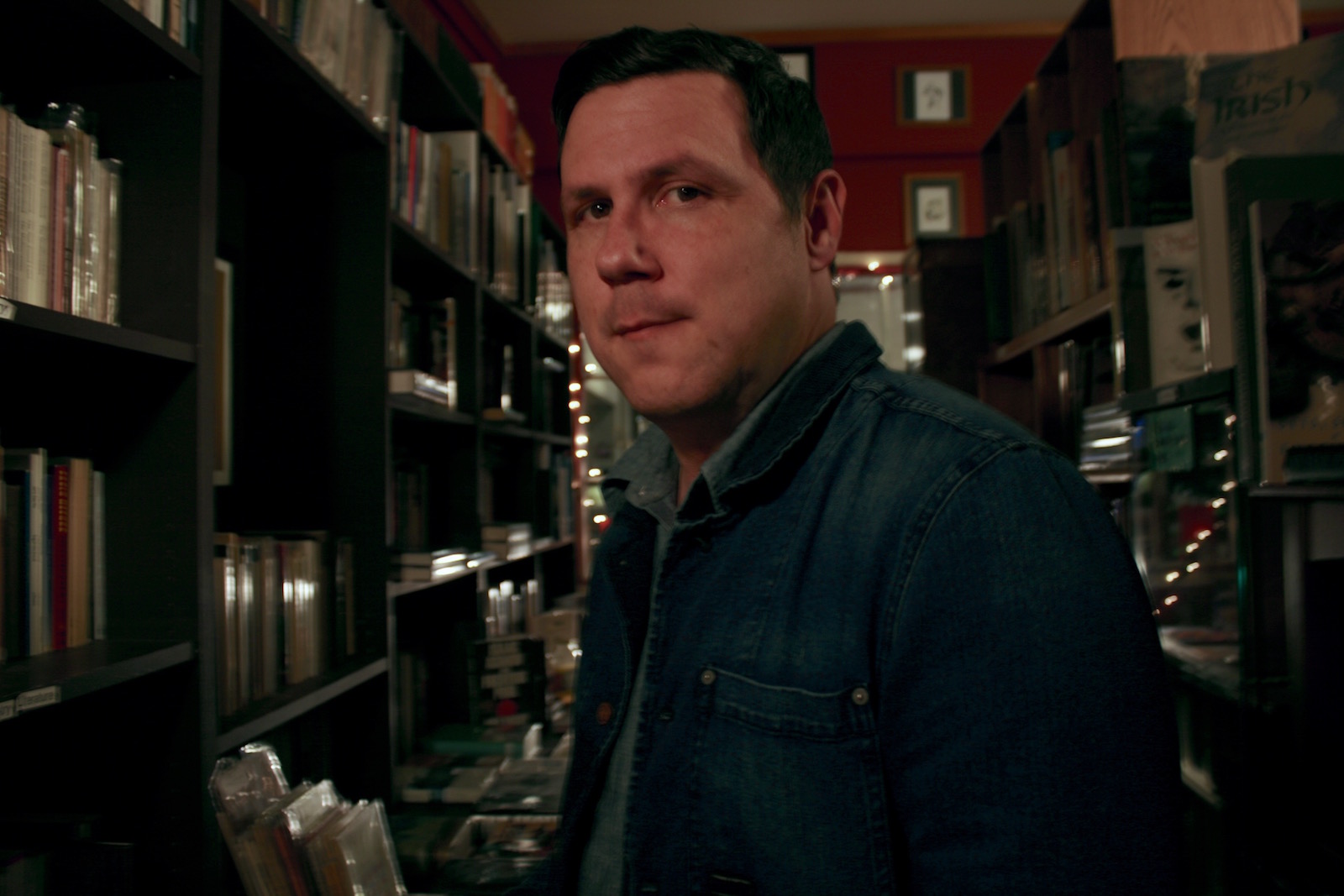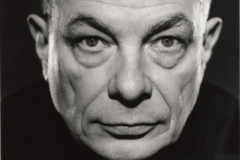Damien Jurado is modest. Since the mid-1990s, the 43-year-old Seattle songwriter has built a steady audience on the strength of his wintry voice and anxious, evocative lyrics, but he’s never quite made it onto the national radar. Pacific Northwest peers like Isaac Brock, Ben Gibbard, and, later, Father John Misty became critical darlings; Jurado refused to speak to an interviewer. Even approaching the release of his 12th album, he’s uninterested in bragging. Instead, he evangelizes for his inspirations — photographer Nan Goldin, futurist architect Buckminster Fuller, The Twilight Zone. As a teen, he says, he received home-recorded cassette tapes from a shaggy-haired hotel janitor named Kurt Cobain. Jurado is a storyteller; unreality is his through-line.
His current project, the most ambitious of his catalog, is a trilogy of reverent, impressionistic concept albums inspired by a dream so clear it was “like a movie trailer,” Jurado tells SPIN over the phone. Through 2012’s Maraqopa and 2014’s Brothers and Sisters of the Eternal Son, he revealed glimpses of a man who wanders away from society and enters a utopian commune. Melding hallucinatory songwriting, tent-revival intensity, and increasingly lush electronic processing, the lonely journey of Jurado’s spiritual traveler just keeps expanding.
The forthcoming Visions of Us on the Land is the final chapter in the Maraqopa cycle. Out March 18 from Secretly Canadian, the album picks up as the wanderer and his traveling companion (“Silver Katherine”) discover they are immortal and utterly alone on the planet. “It would be like if tomorrow, you woke up with your significant other by your side and you went outside and it was completely quiet, and no one was around. You go on to discover that you are going to live forever,” the oracle of Maraqopa explains. “Earth and what you see now is like your Heaven.”
On the eve of this latest record, SPIN talked with Jurado about some of the inspirations he’s drawn on throughout his career thus far. The songwriter came prepared with a list of some of his favorite albums, including lost treasures of the ’60s folk movement, the otherworldly romance of Dead Can Dance, and a Kraftwerk concept album he was introduced to by the late Jason Molina of Songs: Ohia. This conversation has been edited and condensed for clarity.
1. Mimi & Richard Fariña, Celebrations for a Grey Day (1965)
Around the time Nevermind came out, by Nirvana, I cut my ties with punk rock and started getting into more acoustic-based music. I heard Richard and Mimi Fariña on a radio station here. I think the song was called “Pack Up Your Sorrows.” So I went out looking for one of their records, and the first record I got was Celebrations for a Grey Day. Mimi is actually the sister of Joan Baez, the famous folk singer. [It’s] just really beautiful music. Very inspirational to me, I think, as far as creating that folk-rock crossover.
2. Devendra Banhart, Cripple Crow (2005)
I don’t buy a lot of new records, just because there’s so many older records out there that I’m still trying to discover. But Devendra is a current artist I’ve always admired. [Cripple Crow] opens up so beautifully. The first two songs are incredible. Then he goes into sort of this samba. He sings about the Beatles on that album, which I thought was kind of funny, and it’s not done in a cheesy way at all. He’s very free-spirited, and for me, who’s very introverted, I really like and admire people like that.
3. MIJ, Yodeling Astrologer (1969)
The story that I heard about MIJ was, his real name was Jim. He was in Washington Square Park in New York City in the late ’60s when a record producer was walking through the park. He heard Jim singing his folk songs on a four-string guitar and thought he was a really good singer. He asked him if he wanted to come up and record his songs and he agreed. They made this album in, like, an hour. No time at all. He has this really broad vocal range, where he can sing really high and it sounds almost like a screech. His guitar doesn’t really stay in tune all that well. There’s lots and lots of reverb and echo on his vocals. I’m not sure why they did that. I absolutely love this record so much because it’s very, very weird.
4. Dead Can Dance, Spleen and Ideal (1985)
I could never figure out why [gothic kids in high school] liked this band, because there was nothing that was very ghoulish or vampirish about the band in particular. But I’ve always liked Dead Can Dance because the music was very cinematic. This album in particular, you can’t make comparisons to any other record with this album. Spleen and Ideal was actually given to me by this girl I knew my freshman year of high school. This was at the height of when I was into bands like Minor Threat and Dead Kennedys and Black Flag. This was not a punk rock record by any means. But this gothic girl I knew in high school gave me the album on vinyl. I still own the original copy she gave me.
5. Jim Sullivan, U.F.O. (1969)
The whole story about him disappearing in the desert I found so fascinating, because it reminded me so much of my own story with Maraqopa, about an artist who disappears and never comes back. There’s confusion with the Jim Sullivan story because a lot of people think that he did U.F.O. and disappeared, but that actually wasn’t the case. He made another album that was self-titled. I think it’s better than U.F.O., personally. But I put U.F.O. on this list because it’s the first Jim Sullivan record I heard. I’m surprised it didn’t do well the year it came out. It’s really phenomenal. It was made with [legendary session musicians] the Wrecking Crew, who were responsible for so many records, like Pet Sounds by the Beach Boys.
6. The Sound, From the Lions Mouth (1981)
[The Sound] are kind of in the same genre of post-punk as bands like Wire and Joy Division, but they were a lesser-known English band. I first heard the Sound on a college radio station here in Seattle. I think I was 13. You know, at 13, you don’t have a job, my parents aren’t giving me money to buy albums. I’m taking blank cassettes and I’m recording the radio. They played this track by the Sound and I immediately became a fan and spent my hard-earned money on this album.
7. Kraftwerk, Radio-Activity (1975)
We were on tour [in 2002]. It was just Jason and I, and we rented — I don’t know how he got this car — I believe it was a Lincoln Continental. I flew out and I met him in Wisconsin. We’re in his car, it’s the second day of tour, and Jason was playing Kraftwerk’s album Radio-Activity. He said, “Do you know this album?” and I said, “No, I’m not familiar with this band.” He immediately pulled over the car on the side of the highway. There’s semis going full-speed, right by our car, and every time they pass our car is moving to the left and to the right.
He had a duffle bag with CDs in the back seat. He reaches out and he hands me this Kraftwerk CD and he says, “You have to own this.” But he said it almost like [the way] someone would say, “Take this pill, it will save your life.” Jason was a very passionate, and sometimes could be a very forceful guy. I said okay. And we listened to it, from front to back. We listened to it maybe twice. And I still have that CD to this day. It became one of my favorite albums of all time. The seventh on my list.
I wouldn’t have thought it then, but it definitely did become an influence on my albums. Especially later when I did Maraqopa. There’s a song called “Reel to Reel,” and that’s definitely very Kraftwerk-inspired. Every time I play that song, I always remember and I’m thankful for people like Jason, for introducing me to that album.





